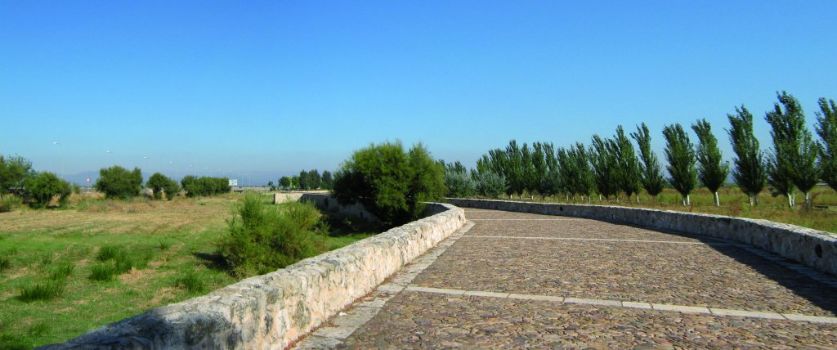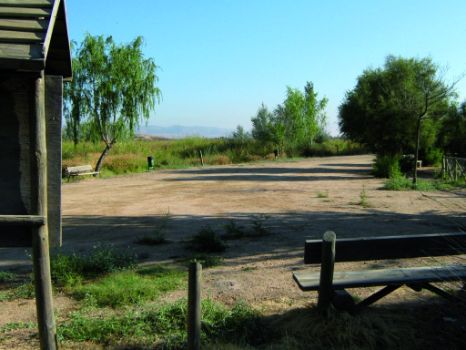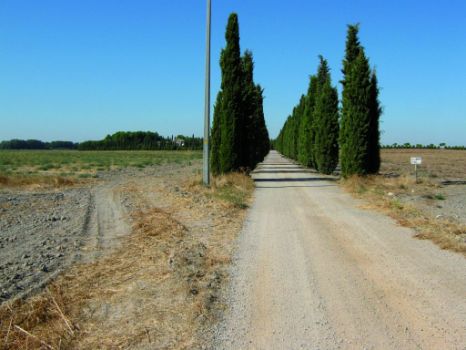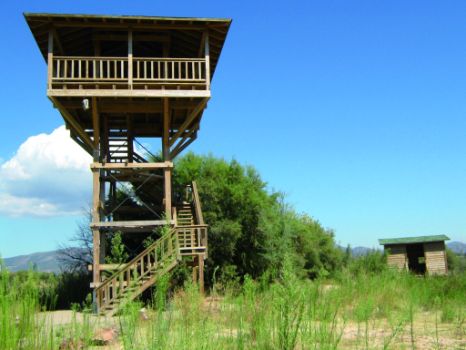Net of Natural
Trails

Stage 5: Villarta de San Juan - Villarrubia de los Ojos
Description
On the plain of La Mancha
The fifth Stage of the Guadiana Nature Trail runs along River Cigüela through the La Mancha plain, whose landscape has been shaped by human activity and agriculture: wheat, barley, vineyards, olive groves and orchards.

The Trail heads north from Villarta de San Juan until Puente Viejo, an old Roman bridge on the River Cigüela. Next to the bridge is a recreation area called "Paraje Los Tarays", also crossed by the Route of Don Quixote. There are information panels, benches, and a small lagoon where fishing is allowed. Several tree species, including poplars (Populus sp.) and weeping willows (Salix babylonica), provide shade. There is also a fountain. The May 1st pilgrimage at Villarta takes place here.
After crossing the bridge, care should be exercised at the roundabout on the former road of Andalusia (N-IV), the main access road to Villarta. Following the signs along the Trail, the route continues for 17 km along a dirt path leading to Villarrubia de los Ojos.

The Stage drifts away from River Cigüela, venturing through croplands towards an intersection where it turns left to continue towards Casa de la Caterilla, where the road is flanked by cypresses (Cupressus sempervirens). The route continues along a straight road to a fenced property where the Trail, flanked by two white roadside beacons, turns left towards the River Cigüela.
The Stage heads across a very sandy lane, parallel to the river, until it reaches a new irrigation canal along which it travels for about 350 meters on the right side. It then reaches a paved road and turns left. About 500 m further on is a roundabout on the N-420.
Caution should be exercised at the intersection. The route takes the second exit on the roundabout towards Villarrubia de los Ojos, and continues along the paved road (CM-4126) for 300 m.

Past a blue industrial building, it turns onto a dirt road to the left, flanked by vineyards and sunflowers, until it reaches another intersection (KM 118), where it continues straight ahead for another 3.5 km. In this section, it is possible to see Red Partridges (Alectoris rufa) and Great Bustards (Otis tarda) amongst the crops, vineyards and orchards. Sierra de Herencia appears along the horizon in the foothills of Montes de Toledo.
The final part of this Stage of the Trail is flanked by tamarisks(Tamarix sp.), common to saline soils with upwellings that form small ponds where different bird species take shelter. Near Villarrubia, about 2.5 kmfrom the town, the Nature Trail Network has built the "Las Charcas" observatory alongside the route. It consists of two buildings for studying birdlife: one is at the lagoon level, and the other at a certain height to gain a better vantage point of the entire landscape.

The landscape is populated with different bird species, including Common Snipe (Gallinago gallinago), Mallards(Anas plathyrynchos), Little Bittern(Ixobrychus minutus), Grey Heron (Ardea cinérea), Great Crested Grebe(Podiceps cristatus) and Little Grebe (Tachybaptus ruficollis). The route heads towards a fork, where it turns right, and further on, crosses Molinos Creek. Caution should be exercised from here to Villarrubia de los Ojos as the Trail runs on a paved road.
The Trail ends at Villarrubia de los Ojos, where one can visit the Church of Nuestra Señora de La Asunción, Shrine of San Cristóbal, Shrine of San Isidro, Convent of the Clarisas, Sanctuary of Virgen de la Sierra, Agriculture Museum, Clock Tower, and the manors of Sánchez-Jijón and Díaz-Hidalgo.
Sites of interest
Profile
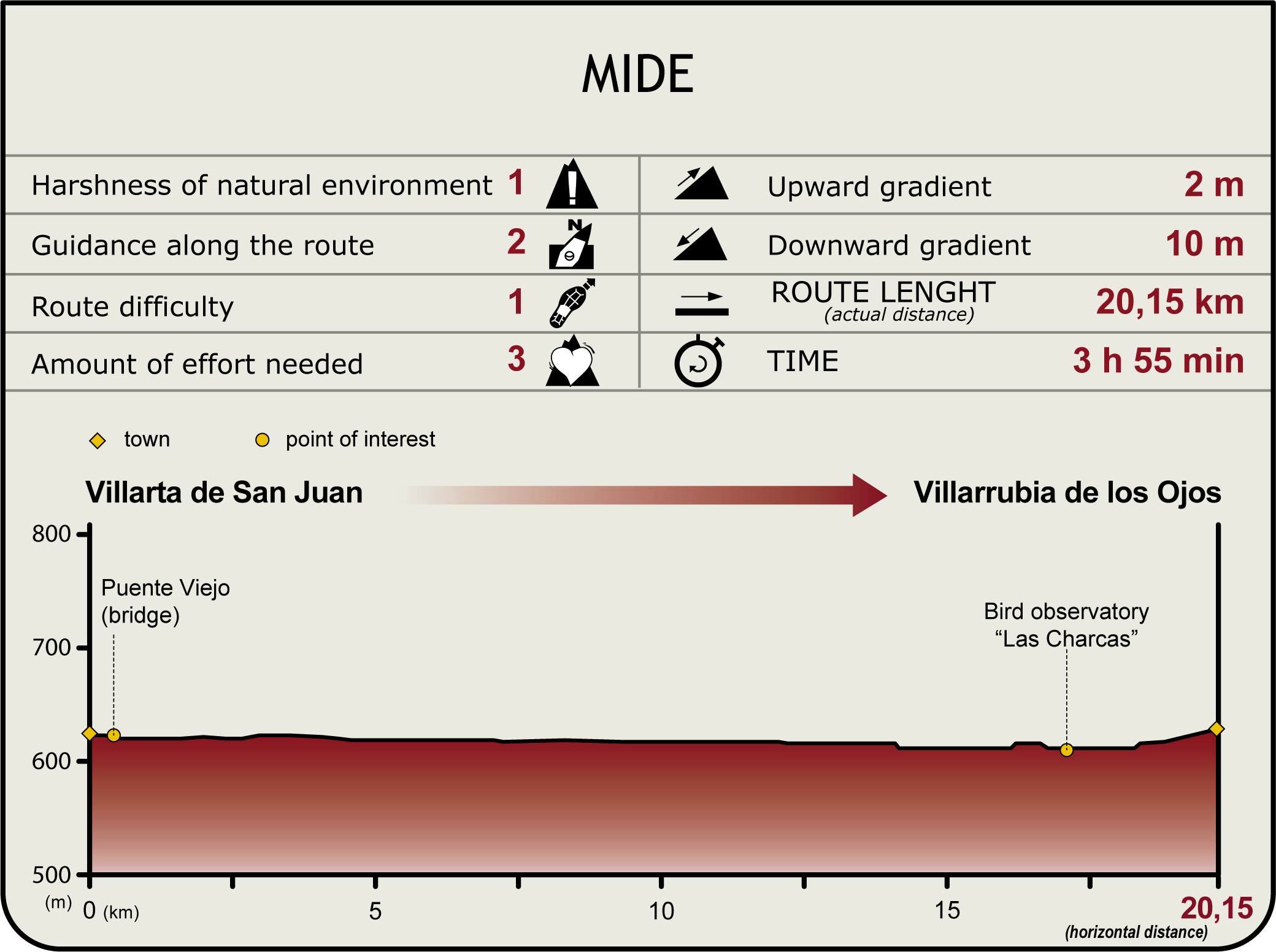
Highlights
Further information
Roman bridge of Villarta de San Juan
Popularly known as "the Old Bridge", it is located between Km 145 and 146 on the N-IV, the old A-road between Madrid and Cádiz. It was originally a Roman bridge, although its structure was consolidated and strengthened in medieval times. During the Mesta, it was used as a toll or strategic point to control the migratory movement of cattle to Campo de Calatrava and Valle de Alcudia. It has since been virtually rebuilt.
The Puente Viejo was declared an Artistic National Monument on November 30, 1983. The importance of the bridge lies in its size, which is about 500 m long and, on average, 5 metres wide, with 46 arches irregularly distributed throughout. One can imagine that the builder had a thorough knowledge of the terrain. Additionally, attached to the left side are two square lay-bys (12x5 m), separated about 140 m from each other. On the opposite side, there is a small, triangular breakwater, 2 mper side.



